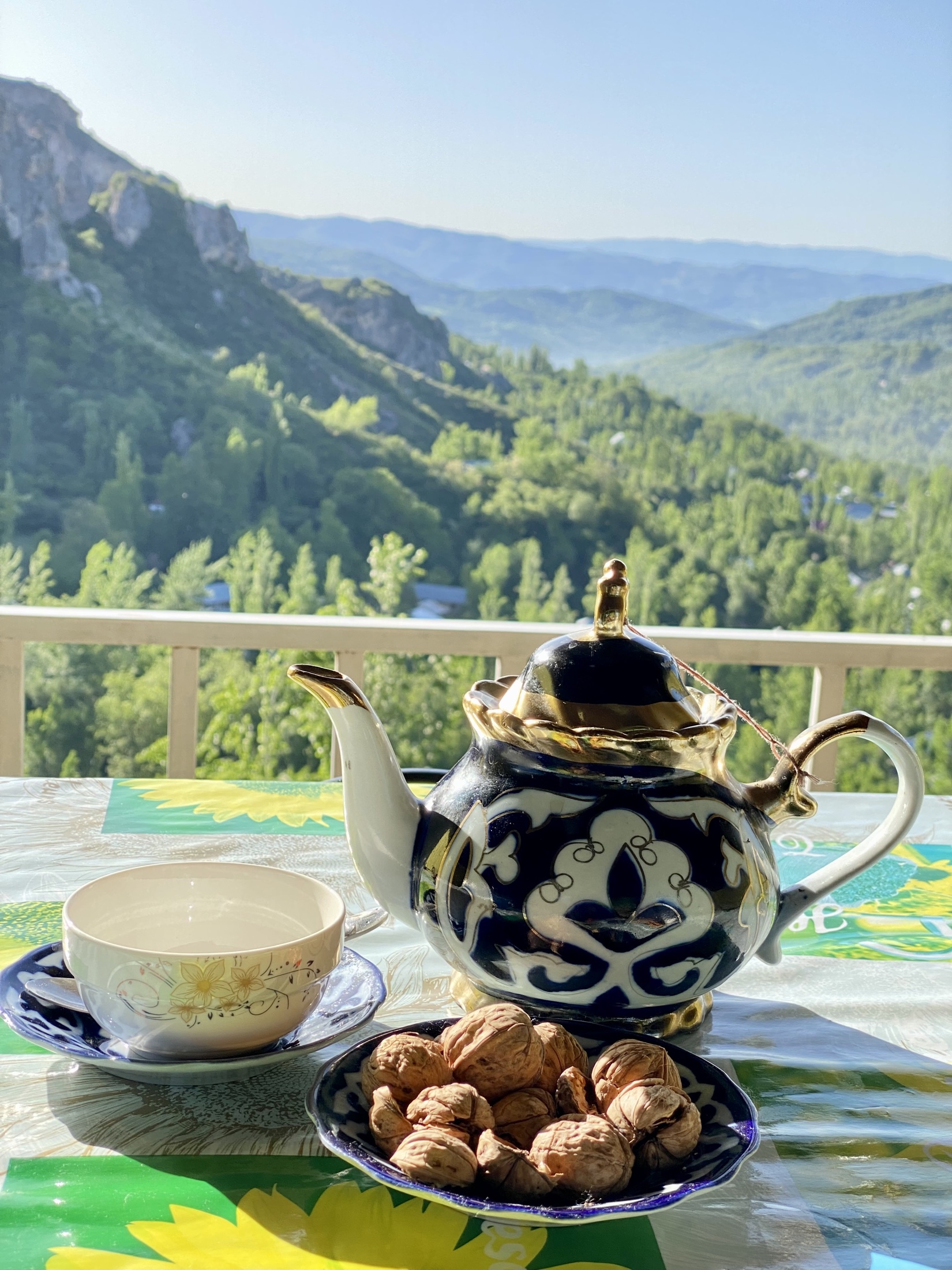
As we walked up the steps to our homestay in the village of Arslanbob, we heard a baby cry.
A black clad grandma was holding a baby swaddled in layers of pink. Her face showed concern and frustration. “May I?” I asked with a smile. To my surprise, she handed me the baby and I put her on my shoulder and started the baby dance that I have practiced to perfection with many babies, my own and others. (Long time ago for many years I worked with new mothers, helping them breastfeed and master other mothering skills).
Soon the little bundle burped and instantly calmed down. The baby’s mother walked out of the house, startled to find her daughter in the arms of a stranger. Her mother-in-law said something to her, presumably about the baby calming down in my arms and the mother looked at me with friendlier eyes. Our guide came up and translated. “It is our first grandchild,” explained the granny. “It is a miracle. We have waited for her for 15 years!”
As we stowed our bags in our guest room, I noticed that the women were getting ready to leave. “Where are they going?” I asked our guide. “To the baqshï – traditional healer. The baby doesn’t eat well and cries too much.”
“Would it be acceptable if I tagged along?”
The women had no objections and we all piled into a beat-up car with a cracked windshield. I sat in the back with grandma, holding the baby, while the mother was in the front. It seemed to me that the baby didn’t quite belong to the mother, but to the family as a whole. Soon the narrow road through the village came to an end.
We had to cross a stream by foot on a rickety footbridge
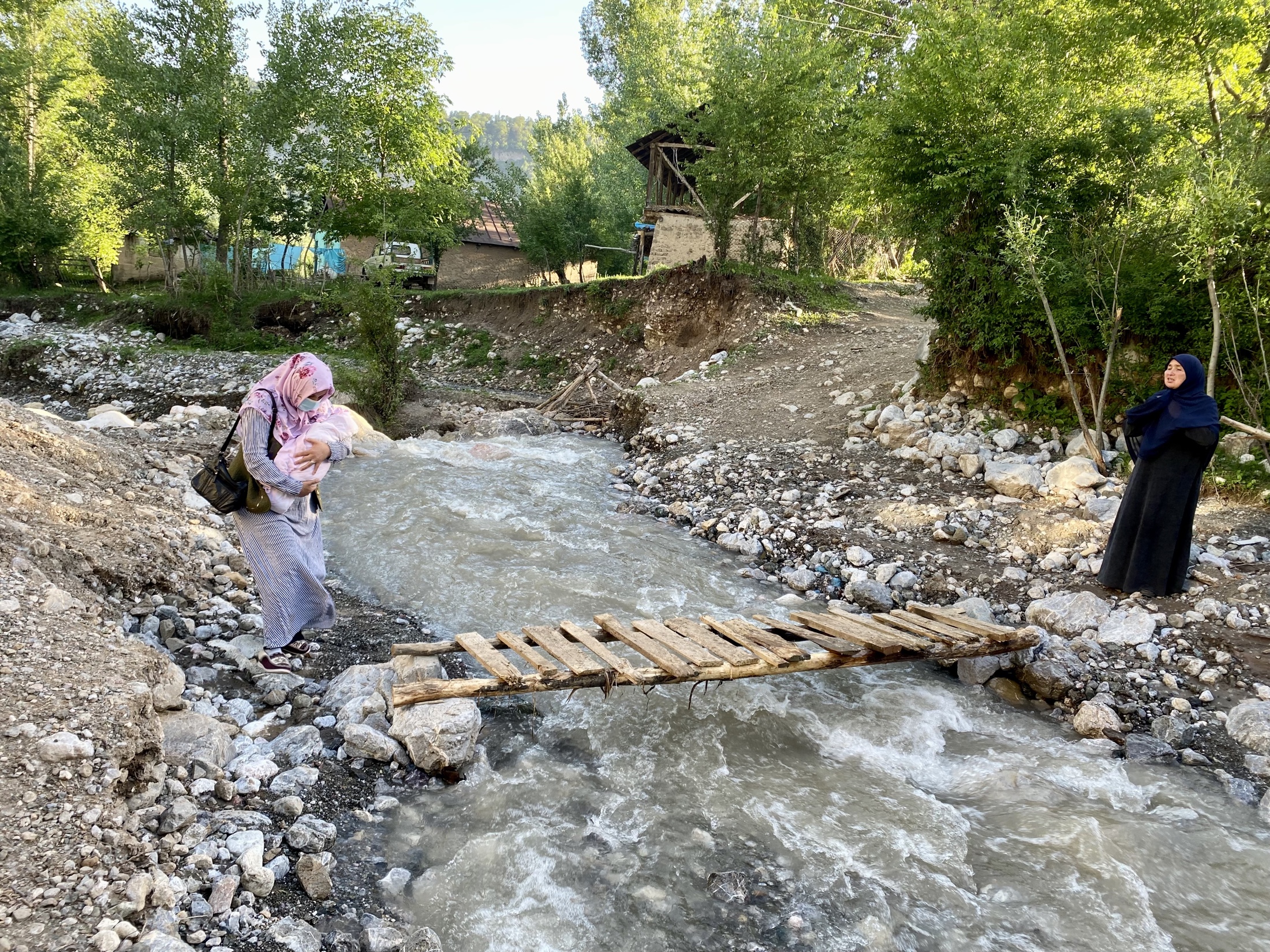
and then walk up to a house. We were welcomed and ushered into a spacious room with floor seating. Immediately an assortment of food was piled up in front of us. The mother passed the baby to the healer.

I gestured to my phone and was so pleased when I got permission to take photos. You see, if I could do my life over I would have wanted to be an anthropologist. I just love learning about people’s traditions, beliefs, and cultures.
Truth be told it is a bit hard to learn about a culture when you don’t understand the language. Not that many words were spoken during the ritual that was part medical examination. After a quick Muslim prayer
I watched intently the healer’s strong, steady, skilled hands probing the baby (checking fontanel for dehydration, tummy for obstructions) and then bringing out various powders and ointments to put on the baby.
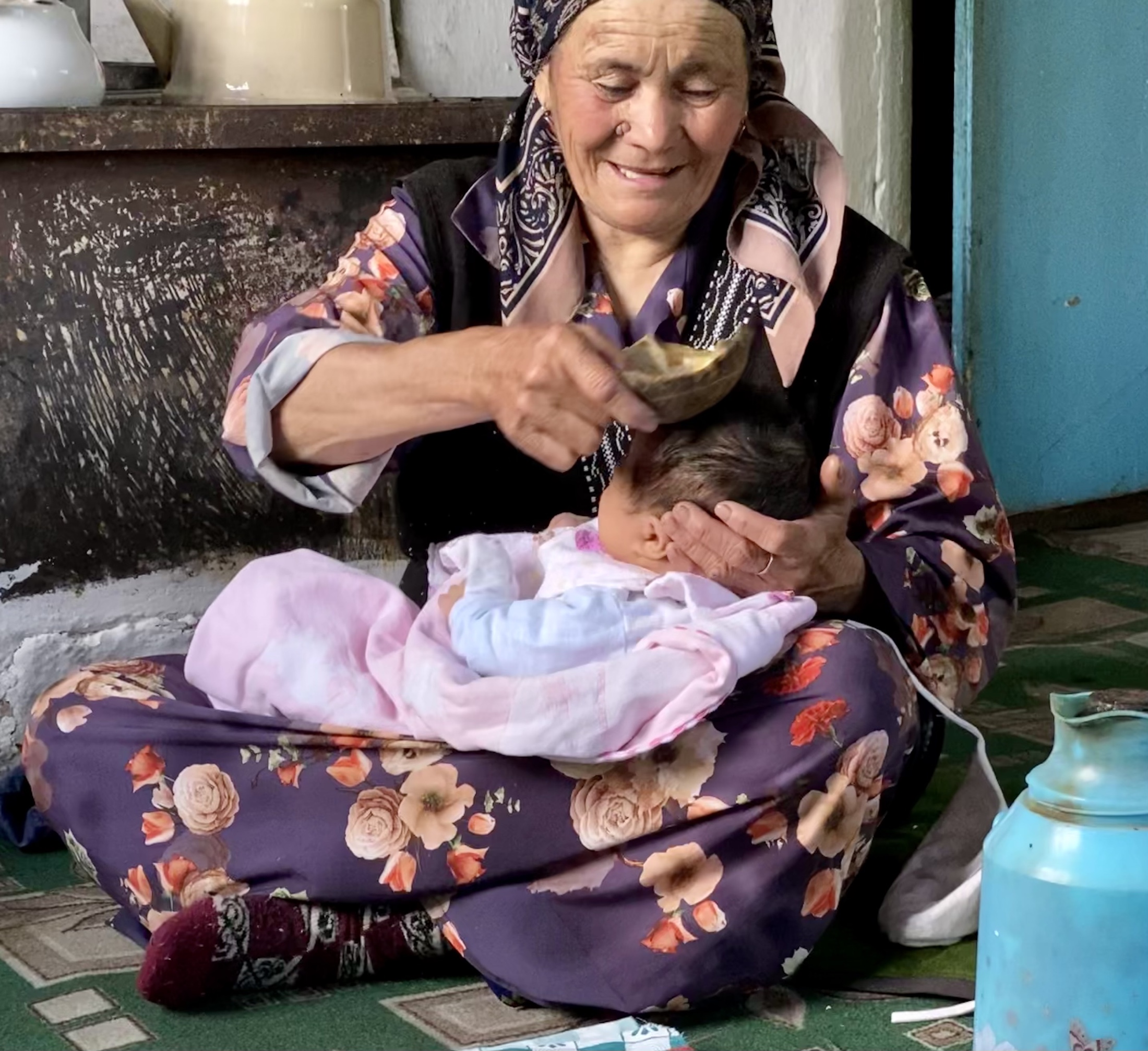
But it was her face that mesmerized me. She had an open face with the kindest smile. I would have gladly put my body and soul into her hands.

But then she asked the mother for a sterile razor blade and while pinching the skin started making tiny little cuts on the baby’s back. That was not something I was quite ready to see, though different ways of “letting blood” to take out impurities is a method used in many cultures.
Luckily the baby barely whimpered and quickly calmed down when put to her mother’s breast where she fell asleep.

There was no payment from our side but in the end we all received a different scarf as a parting gift from the lovely baqshï.
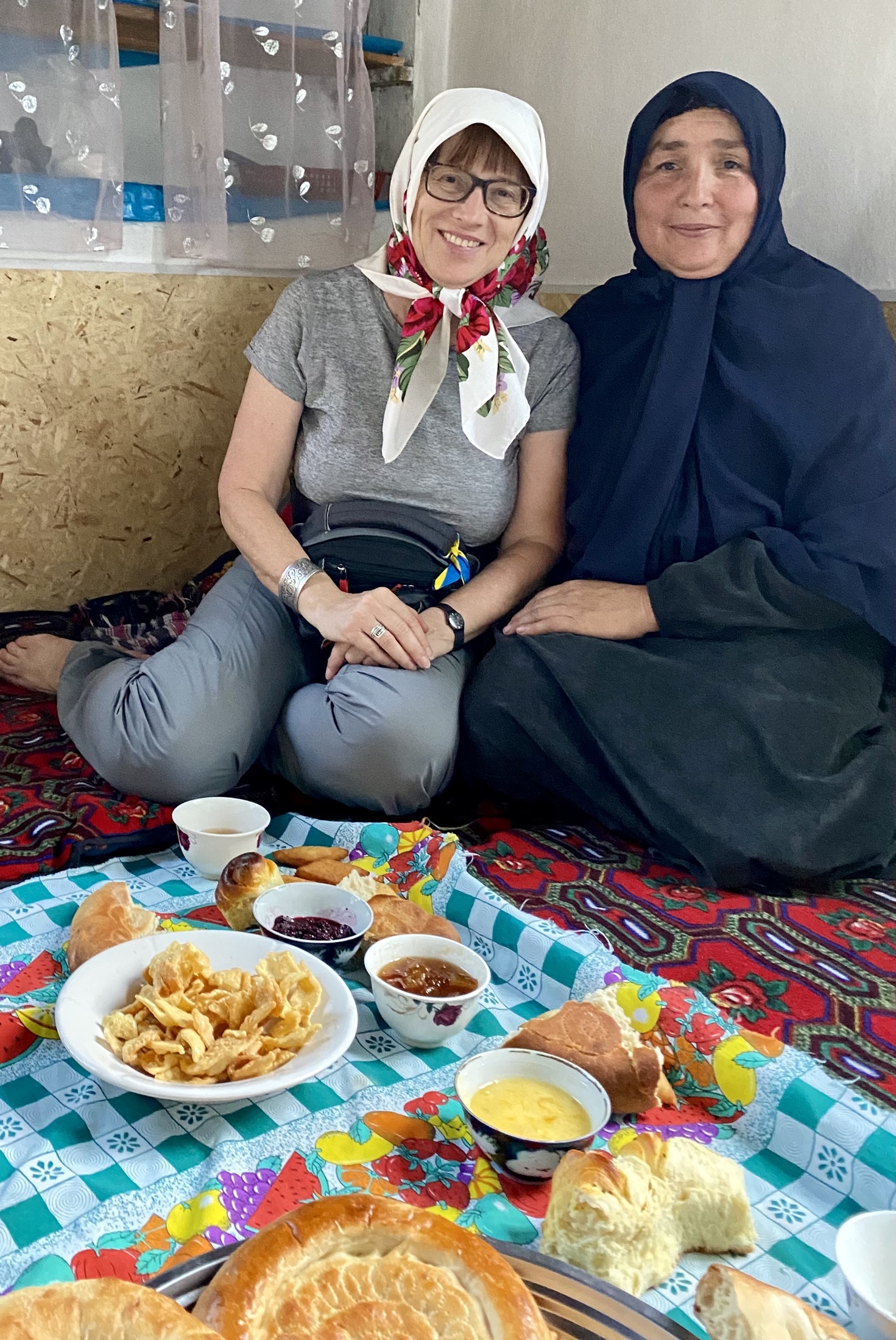
I really wished I could have asked her some questions or offer some breastfeeding advice and if I had had a woman guide I would have been able to. Still, I was very grateful to have had been afforded a thrilling glimpse through the small window into the local culture.
On the other side of life’s journey we had many opportunities to encounter not funerals per se, but burial traditions. Again one could see some remnants of pre Islamic traditions. In the near total absence of historical architectural monuments and only very simple village architecture we were fascinated by attractive graveyards scattered throughout the countryside.

They always had a nice view but were rarely connected to a human settlement. But then Kyrgyzis were true nomads for much longer than sedentary people.
In the olden, nomadic times people were buried on the way, wherever death overtook them. Some more important people would perhaps get a tomb, possibly in the shape of a yurt, that would in time become holy shrines – mazars.
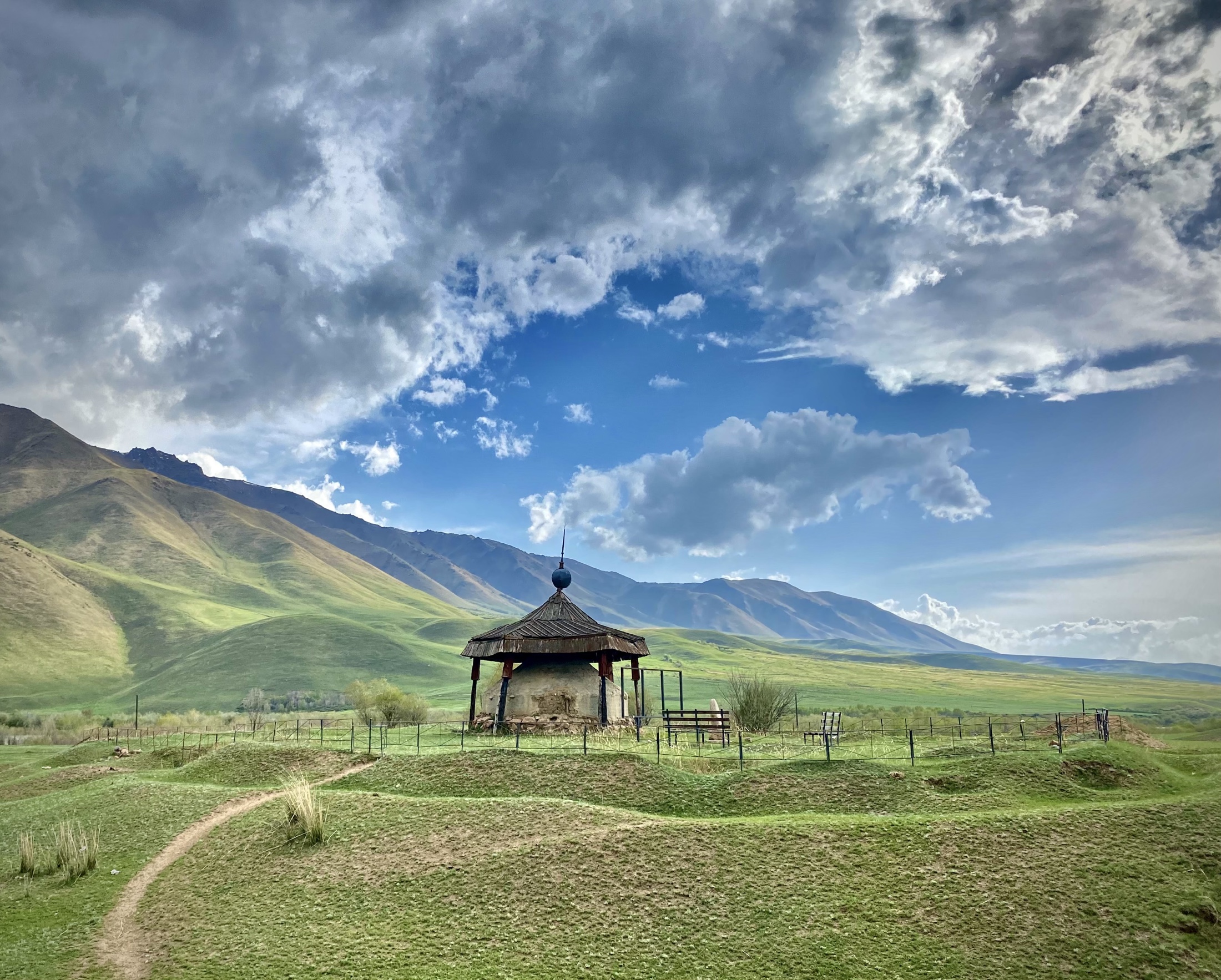
These days skeletal ironwork yurt graves offer rest to family members in their favorite traditional dwelling.

Many tombs were adorned by a crescent moon. The crescent is not only Islamic but also a symbol from earlier times, of light at night.
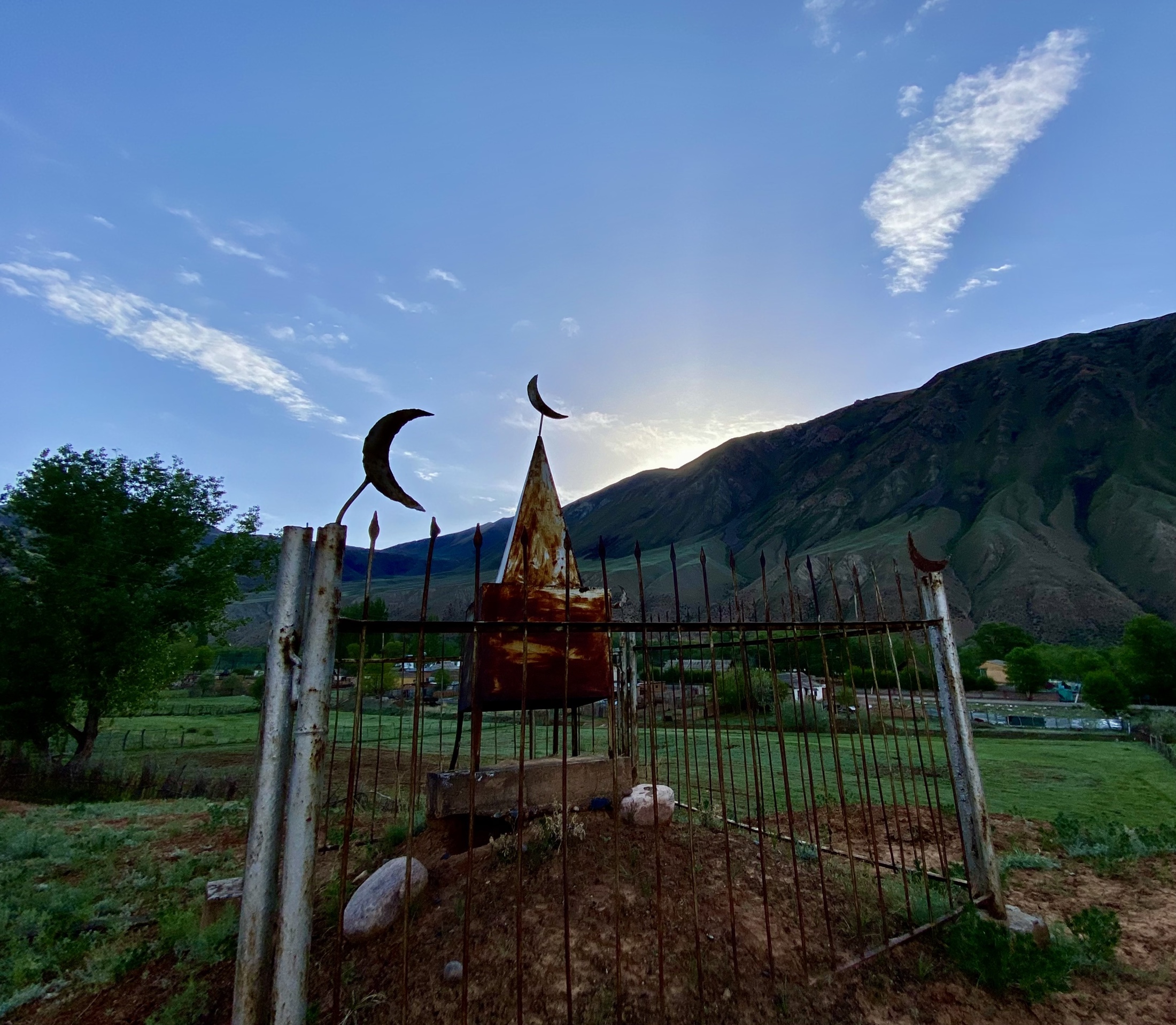
Some others displayed the five-pointed star, a distinctly Soviet symbol.

As most were constructed from adobe (mud and straw) bricks
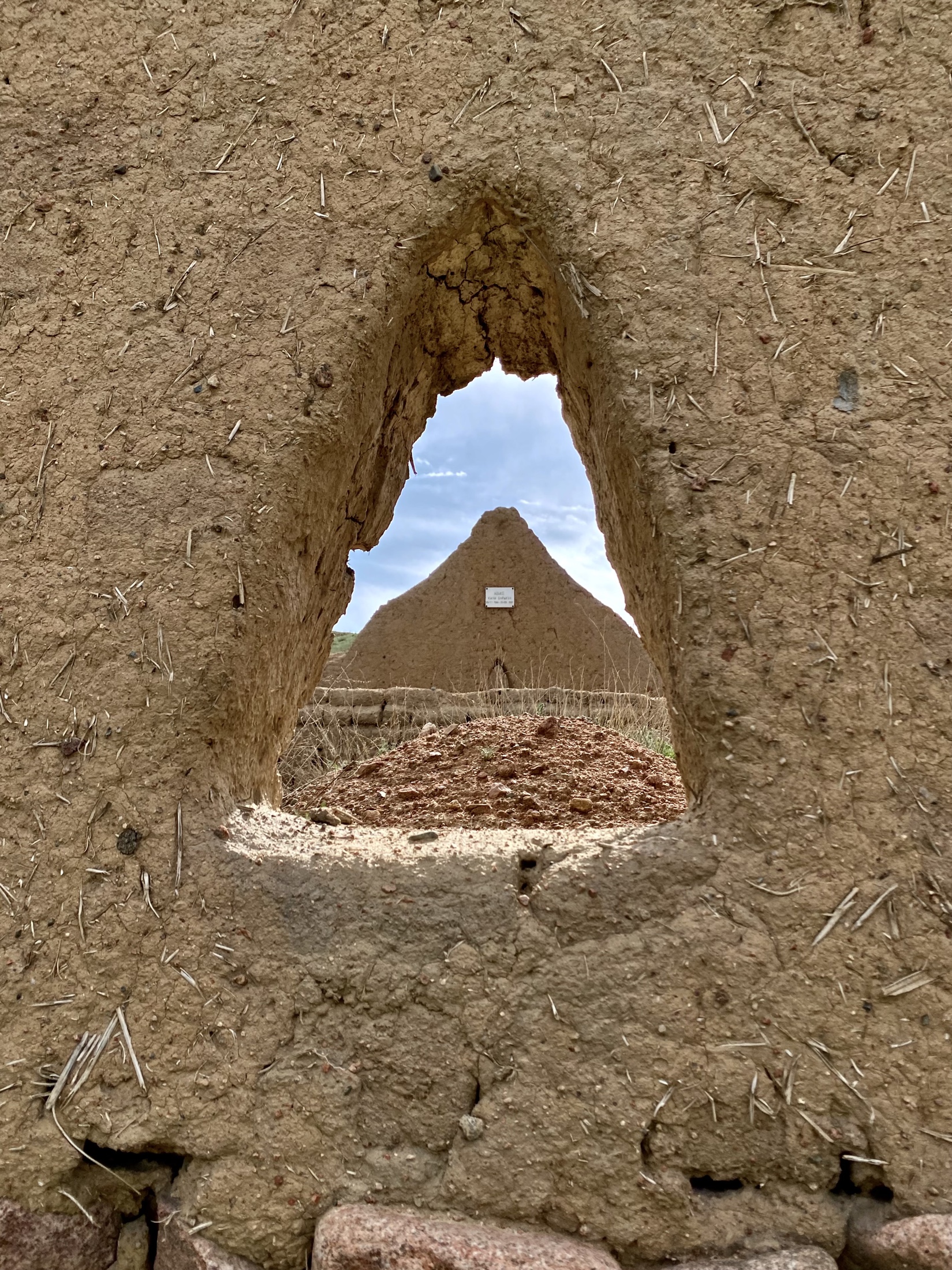
they were in all stages of deterioration, looking like sand castles eroded by Mother Nature and Father Time.
Some had handcrafted pictures and names, but the newest ones followed an uncanny Russian tradition of exact likeness etched in polished marble.

The exact likeness could not be attributed to the traditional bal bals, anthropomorphic sculptures made from limestone and granite.

From 6-12th century they were probably carved memorials to the honoured dead. Their production and reverence ceased with prevalence of Islam which prohibits figural depiction of people.

The majority of population in Kyrgyzstan declares itself Muslim, but except for the South close to Uzbekistan border we felt the country was more secular than its neighbors. There were no grand mosques and we heard no muezzin calls.

The only woman we saw in a real hijab was this stunning fishmonger.

Lucky for us she had no problem posing for pictures.
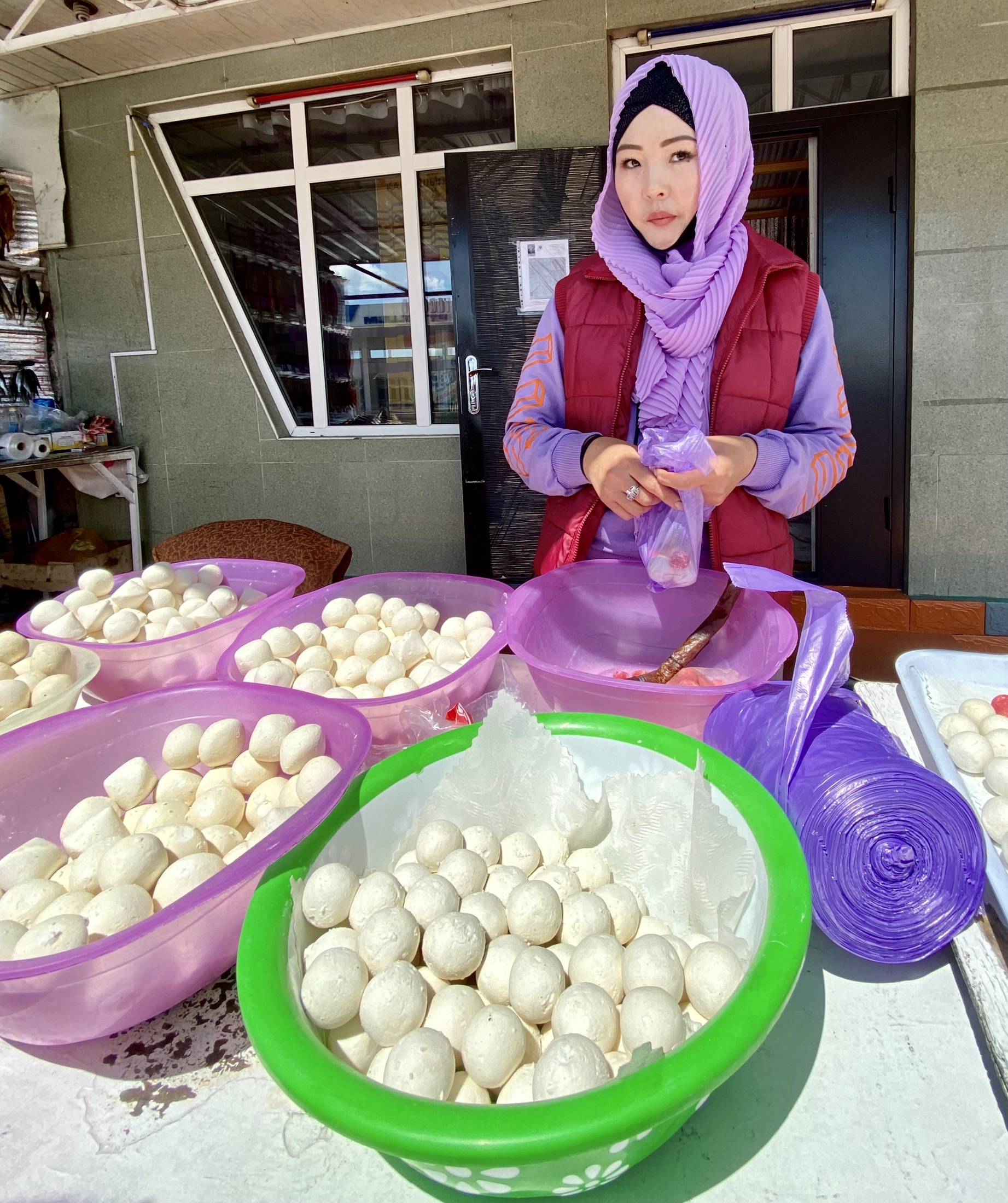
Speak about stunning. This beautiful girl Zarina was the niece of our guide and she gave us a private concert on komuz, a traditional string instrument, while her mom cooked us a delicious lunch.
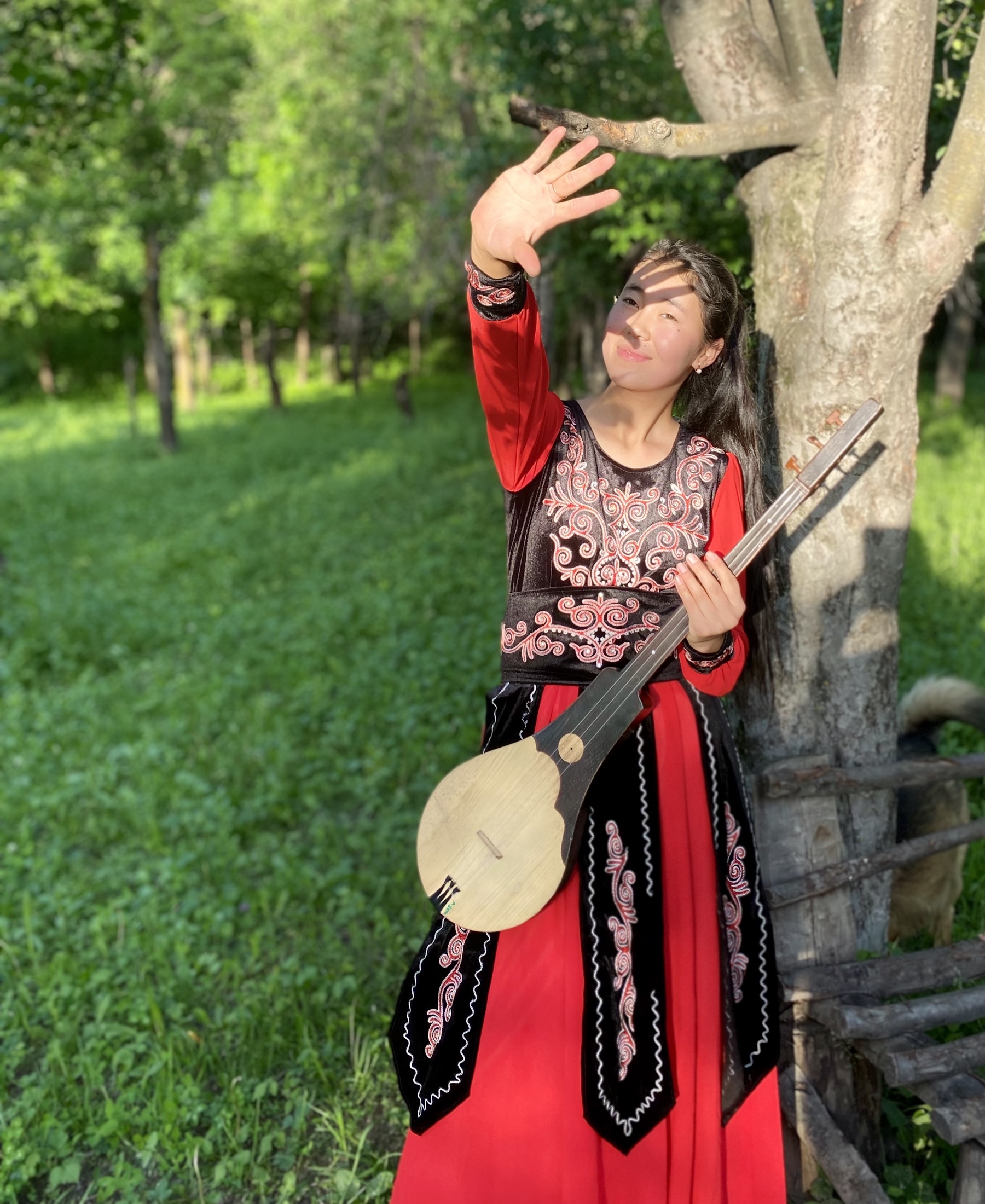

Visiting Begaly’s family was such a treat. Mom and dad were lovely as well.
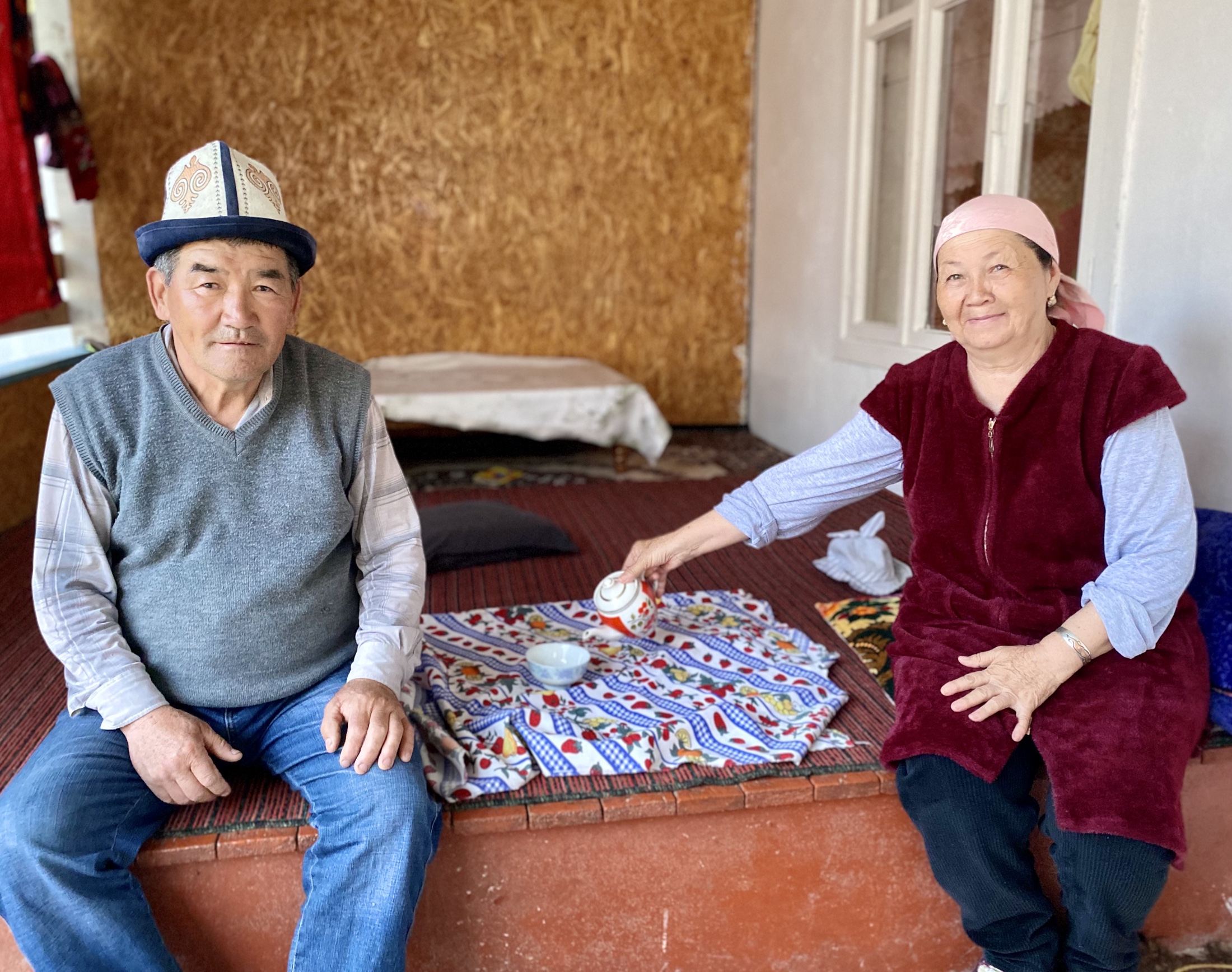
And we even got invited to his sister-in-law’s birthday party.

While many women wore loosely tied scarves, some men wore traditional kalpaks. As it used to be with all traditional clothing clothes or hats were not just for protection from elements but also immediately explained someone’s status in society: noble or serf, married or unmarried, etc.
For example in the past when a Kyrgyz boy was 12 years old he would wear a kalpak with green embroidery, this would change to a blue kalpak at the age of 24, a brown one at 36, beige at 48 and black at 60. If a young man was looking to get married he would wear a kalpak with red decorations.

In case you were curious kalpaks are made with a traditional material – felt, made from wool, plentiful around sheep.
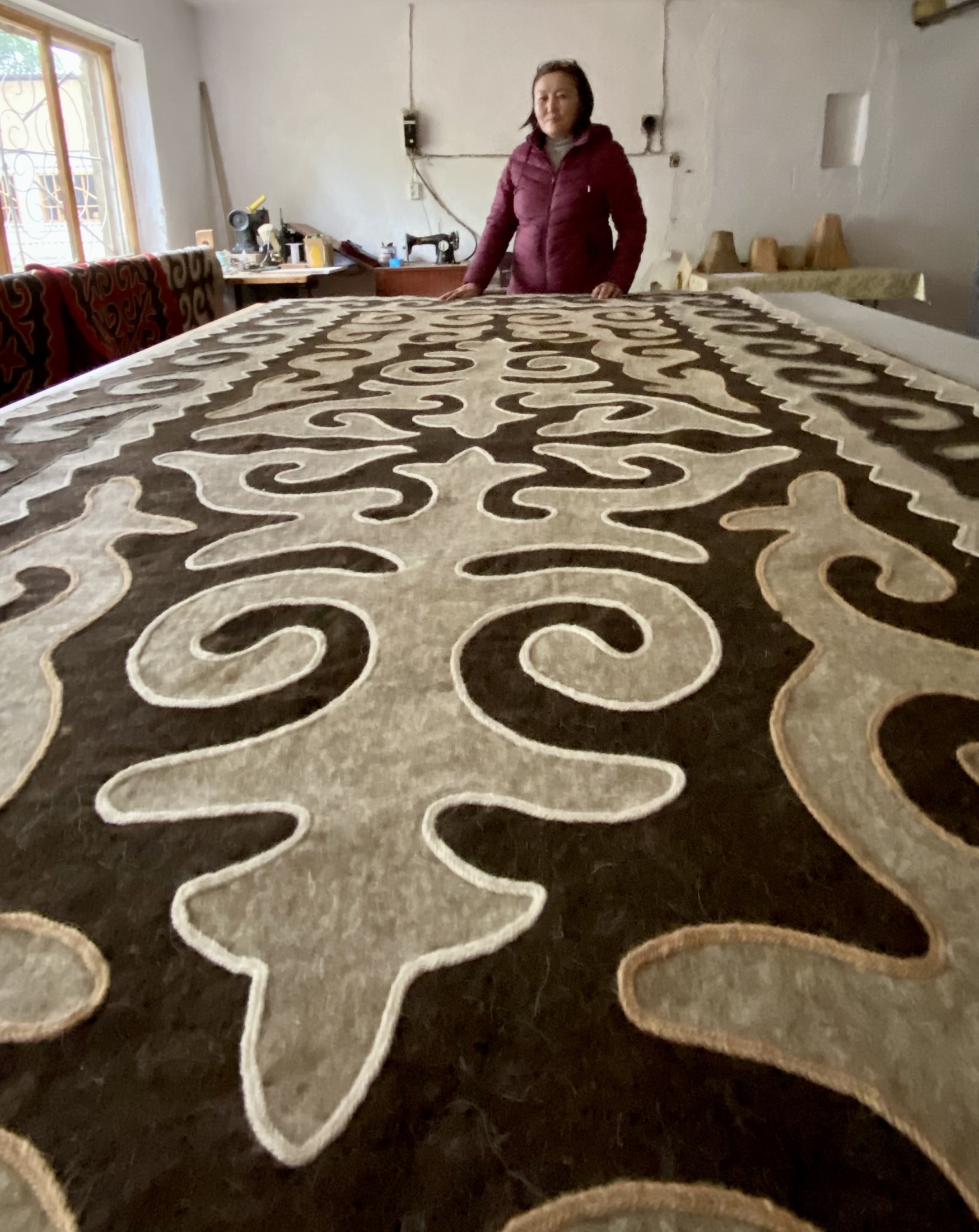
Even we recognized this man we met in the village of Arslanbob as an Uzbeki because of his square hat.

Not sure this gentleman has any symbolism in his clothes. He was impeccably dressed, eating lunch alone in a roadside restaurant and before he left I asked him for a portrait. I wish I had a chance to ask him some questions, but he seemed in a hurry.
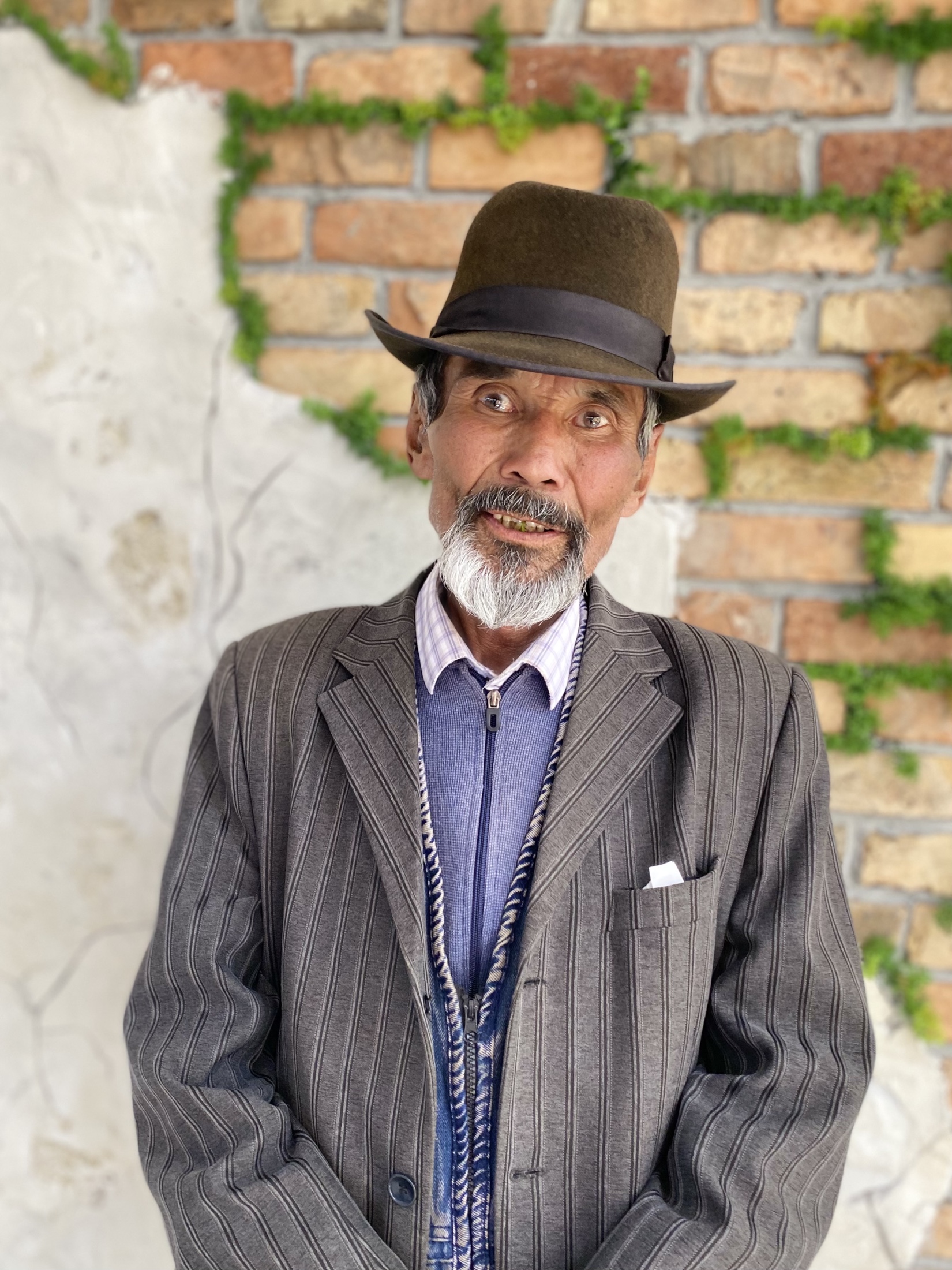
This cool guy was one of a team of four salt miners, we met on a quick detour to an old salt mine. He insisted on gifting me this piece of salt rock.
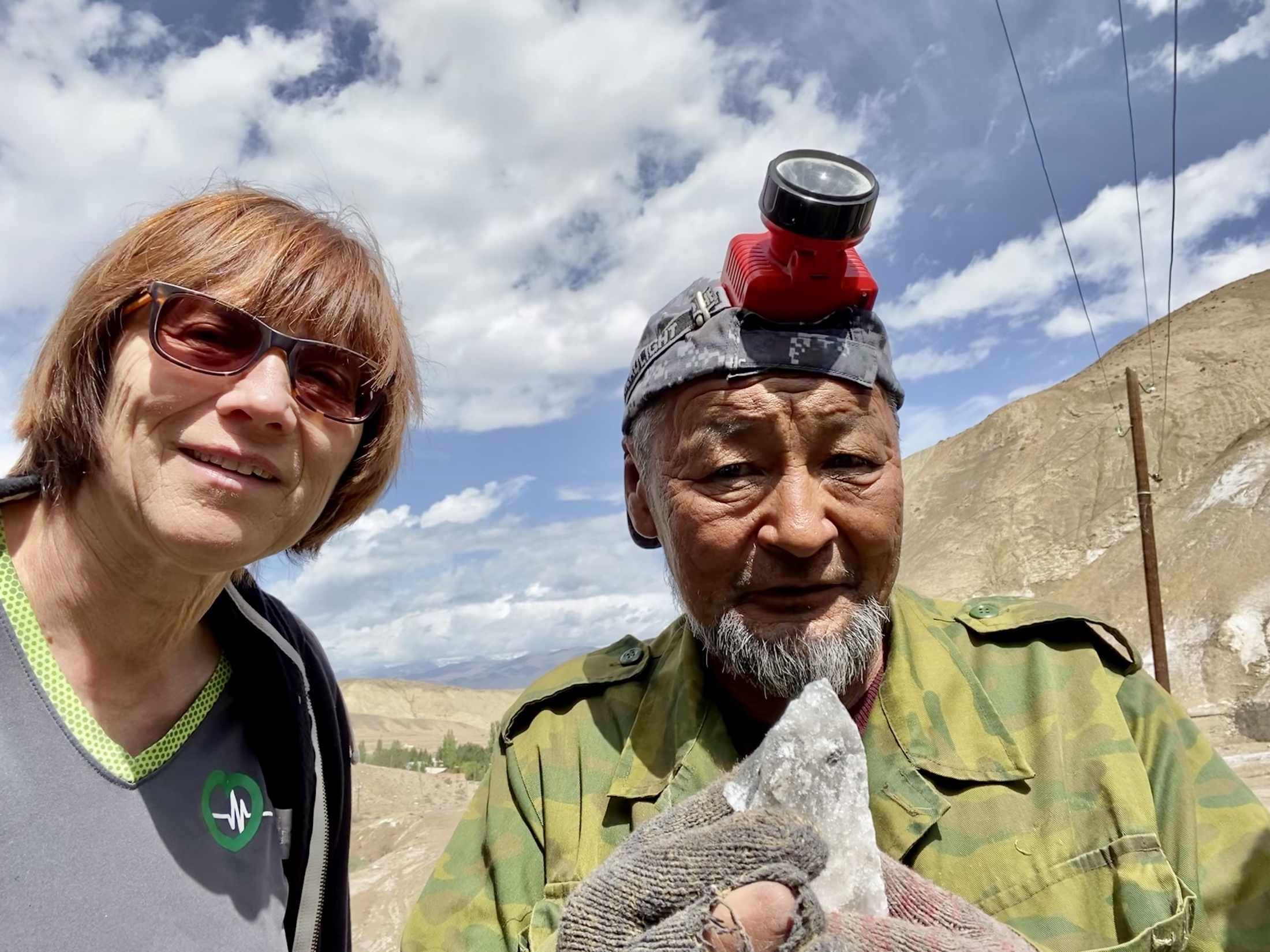
Sometimes the encounters are fleeting
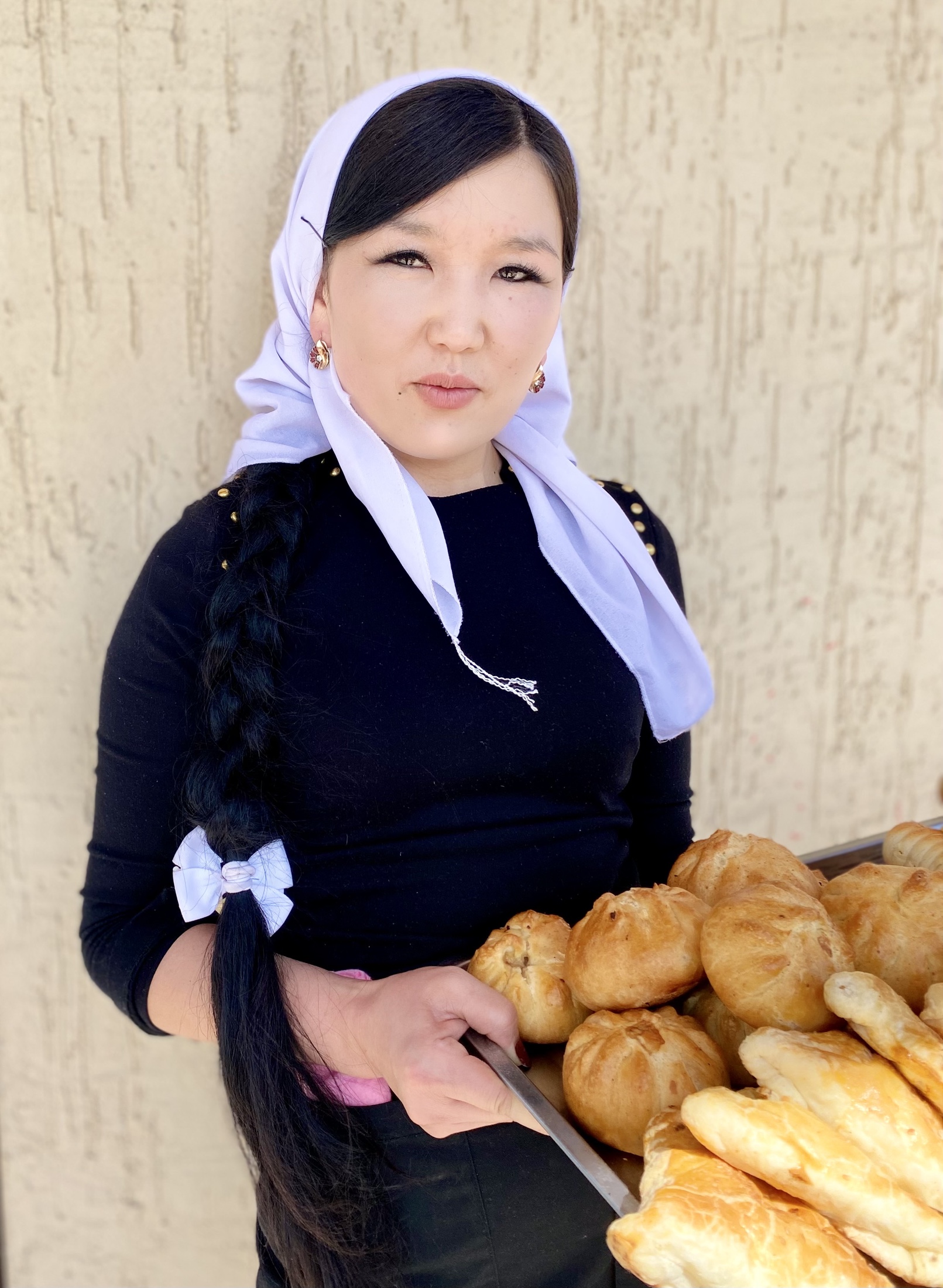
Sometimes we get a chance to have real conversations as with this Dungan lady, the owner of the best coffee shop and a little hotel we stayed at in Karakol. Dungan are Muslim people of Hui origin that left China. They are especially known for their delicious cuisine. Because of her fluent English we had over the course of a few days some lovely conversations about food, traditions, family, and life in general.

It is a bonus when one can have a free flow of ideas that enrich an encounter.
But sometimes words are not needed, generosity and kindness speak directly from one heart to another.
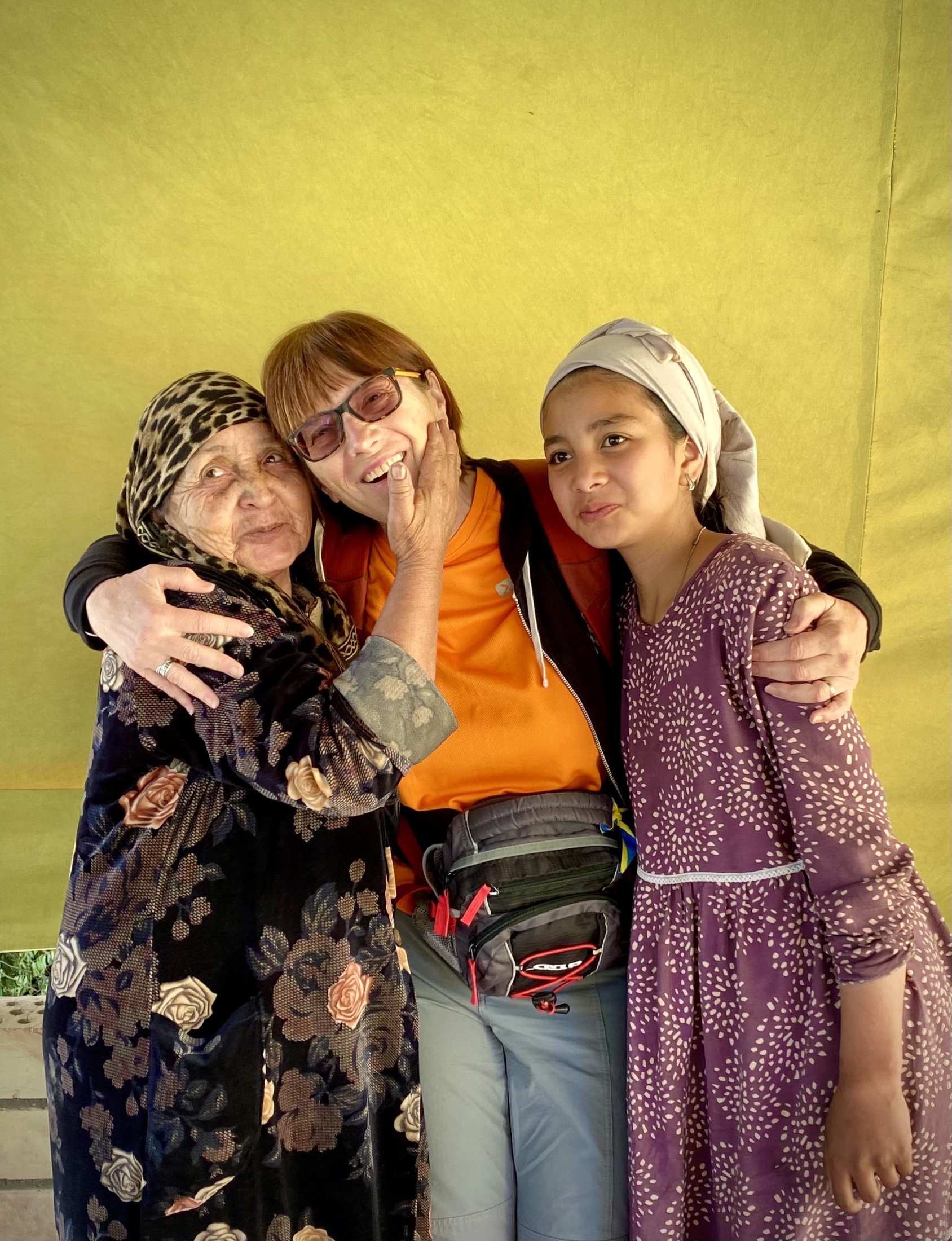
We might say goodbye to Kyrgyzstan, but we will always remember the wonderful people we met.

Such beautiful people, your lives must be so much richer for having met them.
LikeLike
They certainly are, Sally. We feel so lucky that people around the world are willing to open their homes and hearts to strangers like us.
LikeLike
fabulous! i want to go there now
LikeLike
Glad you feel inspired, Karin!
LikeLike
Kesenija and Merek, You are very fortunate to see all the ages of life in this fabulous country. You will not forget them, but they will not forget you either. You two spread the “wonderful American” to many folks around the world…..thank you!! Tom and Maryellen
LikeLike
We try to spread just “wonderful humans” but yes, we do try to improve the American image, too. 😉
LikeLike
Love the Baby & Healer story.. I could almost taste the food.
The fishmonger is stunning and wearing my favorite color and packing her goodies in purple bags. Ksenija, your photography gets better each blog.
LikeLike
Thank you Jenni. Mirek totally fell in love with that beautiful lady.
LikeLike
Ahoj Ksenjo a Mirku, moc hezké povídání o Kyrgyzstánu. Máte v plánu návštěvu Prahy? Ráda vás uvidím. Hanka
Odesláno z iPhonu
LikeLike
Haničko. V Prazr jsme bily kratce. Ted už na ceste po Norsku. Při návratu se ozveme. Tak za měsíc.
LikeLike
I found it interesting that the Baqski asked the mother for a razor blade…. Like everyone just carries a clean razor blade with them? Truly, the Baqski’s face was indeed beautiful. Absolutely beautiful.
LikeLike
The mom came prepared. She knew that will be part and parcel. Nice to see attention paid to sterile tools not some rusty knife.
LikeLike
True to your history, not only do you provide wonderful photos of landscapes but interesting history and encounters with the people of the countries you visit. Very much enjoy hearing about your meet and greets. One of my favorite memories of my trip to Morocco with Jillibean were the home visits where we got to meet and share tea or a meal with local people. Such a different feeling about a country when you know the people. Seems like Kyrgyzstan is all about a simple life, religion, and the people. Great share!!!
LikeLike
Right, Allison!That is the difference between vacation and travel. Vacations are full of me relaxing and recuperating, travel is exploring and learning. But then deep(er) travel is about meeting people and trying to understand their life and culture and history.
LikeLike
Hola, you two intrepid and heart-warming travelers! Thank you for taking us along and continually widening our perspectives. Enjoyed your photos,loved your observations even more, encouraging our curiosity and the unique way you connect with and learn about people and places. Ole! Cayo and Fred
LikeLike
Hola, you two intrepid and heart-warming travelers! Thank you for taking us along and continually widening our perspectives. Enjoyed your photos,loved your observations even more, encouraging our curiosity and the unique way you connect with and learn about people and places. Ole! Cayo and Fred
LikeLiked by 1 person
Thank you Cayo and Fred. You are always so thoughtful and thorough.
LikeLike